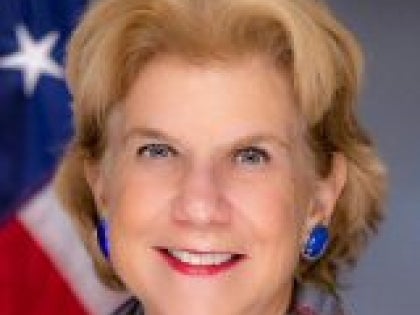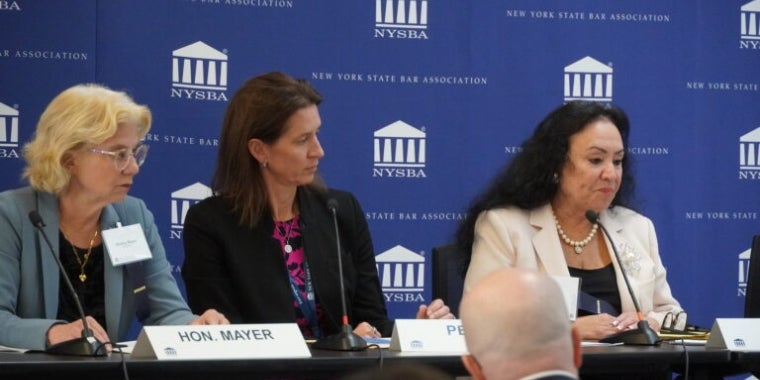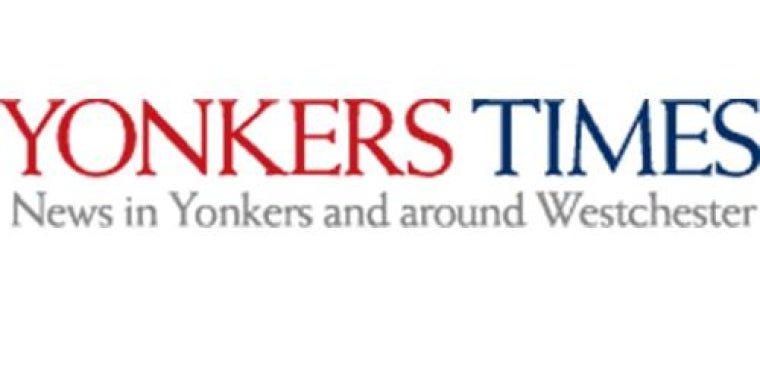
New York could overhaul its school funding formula. Here's how.
ALBANY — School districts that have a reliably wealthy tax base, an excessive surplus, or see a significant drop in enrollment would receive less funding from the state under a proposal expected to be considered in New York next year.
That funding would instead be sent to low-income districts that can’t rely on local taxes to balance their budgets and don’t have cash reserves to cover their costs.
That was a recommendation among many included in a state report released this week after Gov. Kathy Hochul and the state Legislature in April ordered an analysis of how the state distributes funding to schools and whether that should change.
“A lot of school districts are struggling,” Hochul said when asked about the effort in August. “We want to make sure those, especially in our rural, poor areas, are not forgotten.”
The report is the result of a series of public hearings held this year by the Rockefeller Institute, a think tank within the State University of New York that researched and compiled it.
The report was ordered by Hochul and the Legislature in April and compiled by the Rockefeller Institute, part of SUNY.
Lori Van Buren/Times Union
At the center of the debate is something called Foundation Aid, the main source of state funding for school districts that’s calculated each year using a decades-old formula and, in some areas, even older data.
The number of students in poverty in each New York school district is still based on data derived from the 2000 U.S. Census and has never been updated.
The report recommends that the state start using the three-year average of data released each year by the U.S. Census Bureau that estimates each area’s income and poverty levels. That’s called the Small Area Income and Poverty Estimates, or SAIPE.
That data is already used by the federal government to determine how funding earmarked for low-income districts should be distributed, according to the report.
“Using an average SAIPE rate over the most recent three years would reduce the volatility of this measure while still ensuring that annual changes occurring in the poverty-based elements used to make this calculation are accounted for,” the report said.
Other key data points used by the state to calculate the amount of Foundation Aid for each district are also out of date, according to the report.
The measure of each area’s median wages for entry-level, professional occupations, called the Regional Cost Index, is based on data from 2004.
The average private sector hourly wage in New York was $25.27 when the Foundation Aid formula was implemented in 2007, according to the state Department of Labor. That was up to $36.83 last year, according to the agency.
The report recommended that the state instead use annual data on area wages from the National Center for Education Statistics, a federal entity within the U.S. Department of Education.
“The design of (that data), its continuous use of updated data, and its availability on a local level make it a far more appropriate index to use to reflect regional labor market cost differences,” the report said.
Those changes alone, according to the report, could drive more state funding to low-wealth districts where those indicators remain below that of wealthy districts.
Senate Education Chair Shelley Mayer, D-Westchester County, said she had concerns with some of the recommendations.
Phoebe Sheehan/Albany Times Union
But the report also recommended major changes to the state’s Foundation Aid formula, including the end of a policy called “Save Harmless.”
That policy has allowed school districts to receive at least as much funding from the state as they did the year before, even if other factors — like enrollment and their tax base — have changed.
The current Foundation Aid formula guarantees that school districts receive at least $500 in state funding per student. Low-income districts typically receive more than that based on the other values associated with them in the formula.
That $500 is a floor. That means if the formula shows that a wealthy district should technically receive less than that in Foundation Aid, because their local tax base generates more than enough, the state would still have to send that district the minimum of $500 per student.
The report recommended that Hochul and other lawmakers end that minimum payment and instead create a new local-wealth threshold that would be used with data on changes in enrollment to determine if a district should receive more or less aid than the year before.
“The fact that approximately 18% of ‘Save Harmless’ funding currently is allocated to low-need districts is concerning,” the report said.
That could also come with changes on how much schools can have in the bank at the end of their fiscal year.
State law allows schools to keep up to 4% of their upcoming year’s budget in unallocated reserves. State data shows that 227 districts, about a third of New York’s school districts, exceed that cap.
The rule is designed to incentivize schools to spend the money they receive from local taxpayers and the state. The report recommended raising that cap and counting any excessive surpluses against that district’s state aid allocation.
The recommendations could drive more state funding to low-wealth school districts.
Troy Aossey/Getty Images
The report is not binding, meaning Hochul and the Legislature don’t have to accept its recommendations, although they had called for the study to explore how to improve the way the state funds school districts.
Hochul had proposed her own overhaul of the Foundation Aid formula as part of her executive budget in January but it was widely panned by lawmakers on both sides of the aisle because it would have cut funding increases for about half of the state’s schools.
That ended with a compromise: Hochul agreed to a one-year study on the formula by the Rockefeller Institute while lawmakers pushed the conversation to 2025.
A spokeswoman for Hochul said in a statement that the governor isn’t keen on the idea of phasing out the “Save Harmless” policy.
“As we craft the upcoming executive budget, the governor believes we should avoid proposals that would negatively impact school budgets, such as eliminating the hold-harmless provision of the Foundation Aid formula,” said Kara Fesolovich, the spokeswoman. “This study’s comprehensive findings will help inform ongoing discussions with the Legislature and key stakeholders about how we better align our spending to meet the needs of future generations of students.”
State Senate Education Chair Shelley Mayer, a Democrat from Westchester County, said the report highlights important items to consider, like more recent data, but that she didn’t agree with all of it.
“I have substantial concerns about some proposals, including the recommendation to phase out hold-harmless which many districts rely upon to continue serving their communities, despite changes in enrollment,” Mayer said.
Assembly Education Chair Michael Benedetto, a Democrat from the Bronx, said he’s analyzing the report’s findings and recommendations ahead of the new legislative session, which starts in January.
“We’re looking into the report and trying to figure out what it means and how it financially is going to either help or hurt or keep the same financial position of the different districts,” Benedetto said.
Advertisement
Assemblyman Doug Smith, the top-ranking Republican on the Assembly Education Committee, said he agrees with a more careful approach to state spending but not at the cost of services for students.
“We must avoid redistributing resources in a way that dismantles successful programs, particularly those in suburban communities that have long been models of educational excellence,” Smith said.
Hochul and the Legislature are expected to resume negotiations on school aid as part of the state budget. That’s due April 1.



